Last May I was able to visit my niece's apiary in Oakland. CA. She started beekeeping shortly before I did in 2009. We did not know of each other's interest at first. It has been helpful to have a family member who "understands." I posted about my visit last year but shortly afterwards there was a problem with my blog and updating on blog rolls. My posts were not showing up anywhere. In the process of fixing the problem I deleted the blogs that did not update. One of them deleted was this post and I wanted to get it back up. It is not quite swarm season in So Cal so this is a good time to revisit the visit.
Tricia's bees are located on a slope between the front of her house and the street. There is plenty of vegetation to screen the bees and the hives are visible from the deck above. In her area, May is when the bees are really starting to work. Located close to the San Francisco Bay it can be cool well into the Spring. She wanted to see how the hives were doing.
The top super did not have much activity but the other two were loaded with bees.
In the two shots above you may find the queen. When Tricia spotted it and pointed her out I tried to snap off a shot but usually she was gone by then. See if you can find her, I didn't.
Lots of bees and capped honey on all of the frames in the second super. There was all sorts of things going on in the hive.
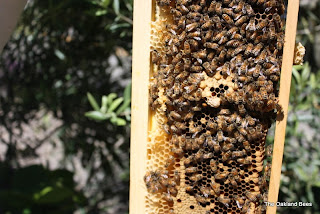 |
| Queen Cell maybe a swarm or a new queen. |
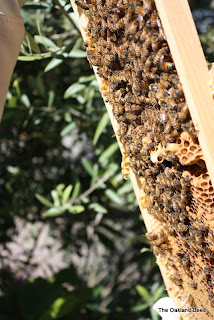 |
| Opened Queen Cell |
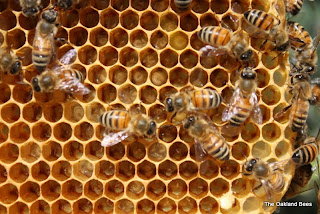 |
| Click on this and look closely at the bee in the middle and you can see an egg in the cell just off her wing tip. |
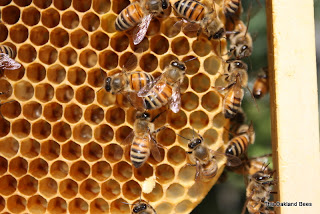 |
| Nurse bees and larvae |
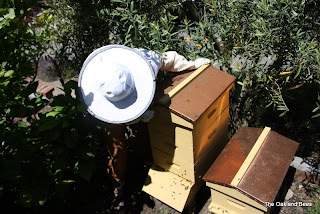 |
| This hive was very healthy and active with a prolific queen so Tricia closed it up |
 |
| On to the small hive populated by a collected swarm. |
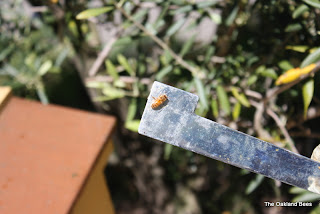 |
| These were very nice little girls, never complaining about how they were handled. The beek was gentle. |
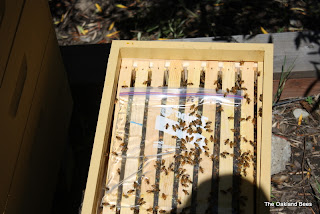 |
| This is a single super and still had some sugar water in the baggie |
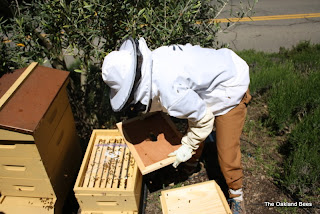 |
| After a cursory check, Tricia decided to not bother them any more after adding another super.. |
|
 |
| The beek and her girls all back in place. |
It was a fun visit and nice to have time to take a lot of pictures (90+) for the blog. Her Mom & Dad are doubly happy, honey from two sources.. Northern and Southern California. This year we will have to compare honey.